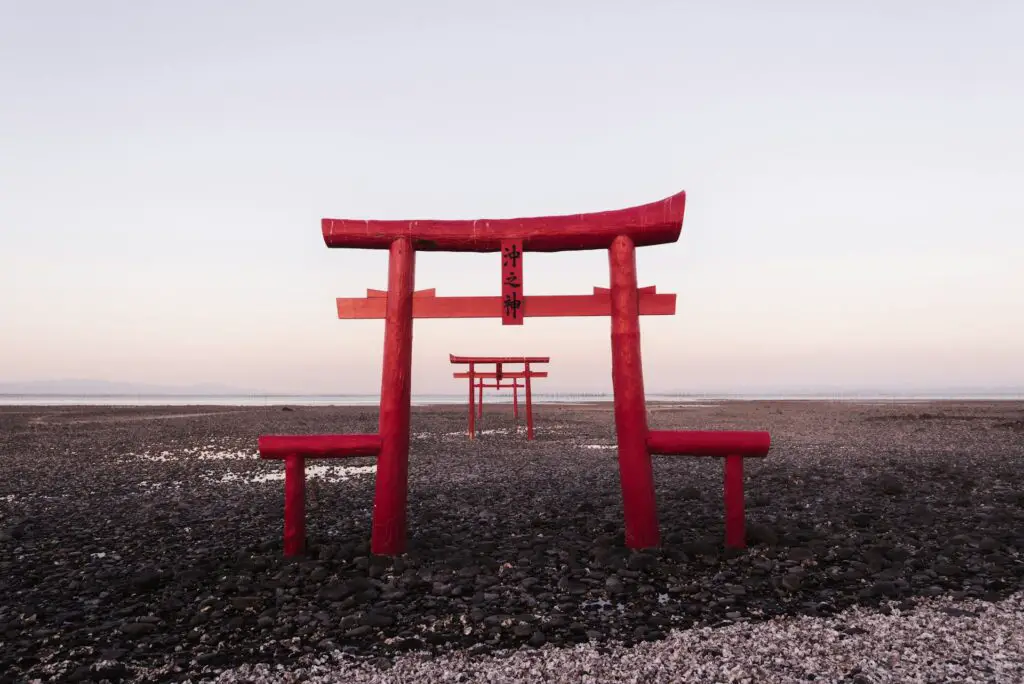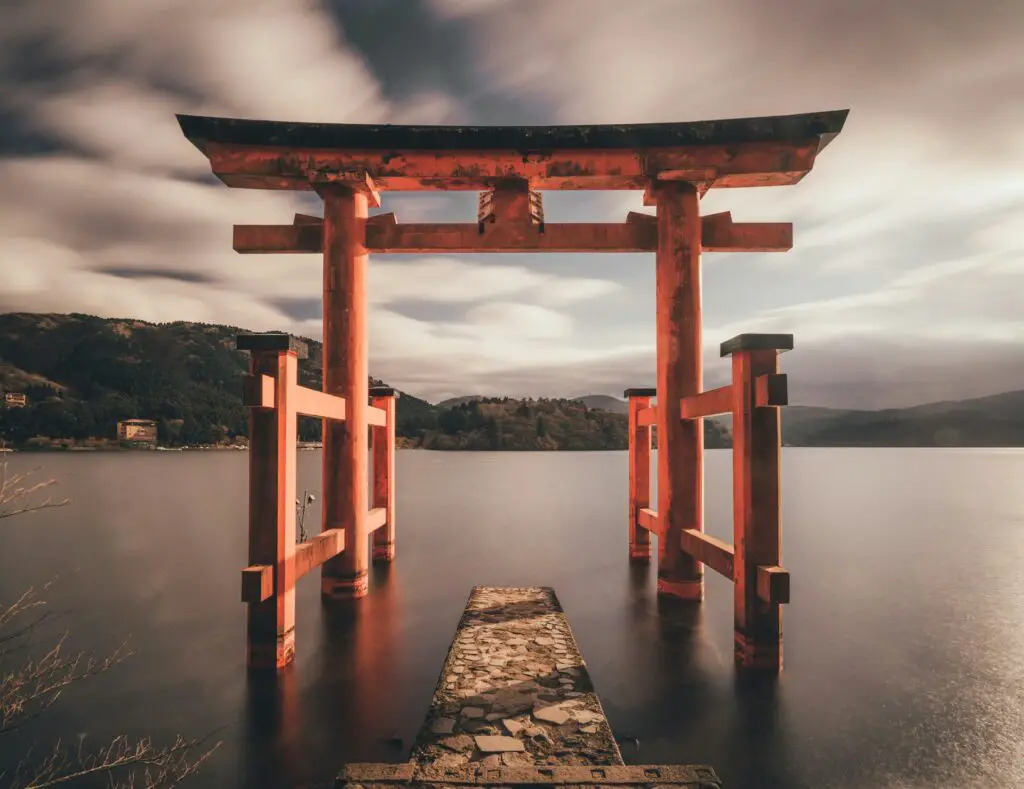Shinto, Japan’s indigenous religion, offers a fascinating window into the country’s cultural and spiritual landscape.
Rooted in ancient beliefs and practices, Shinto reveres the natural world and its myriad spirits known as kami. Understanding Shinto is not merely an academic pursuit; it provides insights into Japanese culture, traditions, and societal norms.
What is Shinto?
Shinto, which means ‘way of the gods,’ is Japan’s oldest religion, deeply intertwined with the nation’s history, culture, and identity. It revolves around the veneration of kami, spirits, or deities believed to inhabit the natural world, such as mountains, rivers, trees, and animals.
These kami are revered as both benevolent and powerful entities. They are thought to influence various aspects of life, from fertility and harvests to protection and prosperity.
Central to Shinto practice are rituals, ceremonies, and purification rites performed to honor and appease the kami. Shinto rituals often occur at shrines, serving as sacred spaces dedicated to specific kami.
Shinto does not have a single authoritative scripture or doctrine; its beliefs and practices are passed down orally and through rituals.
Origins of Shinto
Shinto’s origins trace back to ancient Japan, where animistic beliefs and practices were prevalent. Unlike many religions, Shinto doesn’t have a recognized founder. Instead, it evolved from the spiritual traditions of the ancient Japanese people.
During the Yayoi culture period (c. 300 BCE – 300 CE), the foundations of Shinto were laid. Ancient Japanese society worshipped divine ancestors and communicated with the spirit world through shamans. These animistic beliefs formed the basis of Shinto, with elements like attributing divinity to natural phenomena and geographical features.
For instance, prominent kami (gods or spirits) in Shinto include the sun goddess Amaterasu and the wind god Susanoo. Mountains, rivers, and other natural features were also considered sacred, with Mount Fuji being especially revered. Its name originates from the Ainu word ‘Fuchi,’ referring to the volcano god.
In Shinto, kami govern nature in all its forms and are believed to inhabit places of particular natural beauty. On the other hand, evil spirits or demons, known as oni, are mostly invisible. Though some are envisioned as giants with horns and three eyes, they are seen as having temporary power and do not represent inherent evil.
Ghosts, called obake, require specific rituals to be sent away before they can cause harm.
Additionally, the spirits of deceased animals, particularly foxes, are believed to be capable of possessing humans and must be exorcised by a priest to remove their influence.

Shinto and Buddhism
The introduction of Buddhism to Japan in the 6th century initially led to some conflicts with Shinto, the indigenous religion.
However, the two religions found ways to coexist and complement each other over time. One approach was to consider kami, the spirits or deities of Shinto, as manifestations of Buddha.
During the Meiji Period, which began in the late 19th century, Shinto was elevated to the status of Japan’s state religion. Shinto priests were appointed state officials, major shrines received government funding, and Japan’s creation myths were used to promote a national identity centered around the Emperor.
However, Shinto and the state were officially separated after World War II. This separation marked a significant shift in the relationship between religion and the government in Japan, leading to greater religious freedom and autonomy for Shinto and Buddhism.
Shinto Core Beliefs and Principles
Here are some of Shinto’s beliefs and principles:
- Reverence for Kami: Shinto holds a deep reverence for kami, the spirits or deities believed to inhabit the natural world, including elements such as mountains, rivers, and animals.
- Harmony with Nature: Central to Shinto is the belief in the interconnectedness of humanity with nature. Nature is considered sacred, and rituals often involve purification ceremonies conducted in natural settings.
- Purity and Purification: Shinto places great importance on physical and spiritual purity. Purification rituals, such as washing hands before entering a shrine, are common practices to cleanse oneself before approaching kami.
- Cyclical View of Life: Shinto embraces a cyclical view of life, where birth, death, and rebirth are natural and interconnected processes. Life is seen as a continuous cycle, and ancestors are revered as part of this ongoing cycle of existence.
- Emphasis on Ritual and Ceremony: Rituals and ceremonies play a significant role in Shinto practice. They honor kami, mark life events, and express gratitude for the blessings received. These rituals often involve offerings, prayers, and symbolic gestures.
- Community and Ancestral Worship: Shinto emphasizes the importance of community and family ties. Ancestral worship is a common practice, with families honoring their ancestors through rituals and offerings to ensure their continued protection and blessings.
- Simplicity and Beauty: Shinto values simplicity and beauty in its rituals, ceremonies, and sacred spaces. Shrines are often designed to blend harmoniously with their natural surroundings, reflecting the belief that beauty and harmony are essential aspects of spiritual expression.
Shinto in Practice Today
Today, Shinto continues to be an integral part of Japanese culture, with its rituals and traditions woven into daily life. Shinto practices uphold a deep reverence for nature and the spiritual world, from visiting shrines to participating in seasonal festivals.
Shrines as Sacred Spaces
Shinto places great significance on shrines as sacred spaces where kami, the spirits or deities, are enshrined and worshipped. Shrines vary in size and complexity, from small roadside shrines to grand structures with elaborate architecture.
These sacred spaces are often located in natural settings, such as forests or mountains, reflecting Shinto’s deep connection to nature.
Visitors to shrines typically follow purification rituals, such as washing their hands and mouths before entering, to show respect to the kami and maintain purity.

Rituals and Festivals Throughout The Year
Rituals and festivals are central to Shinto practice, marking important events and seasons throughout the year.
These rituals often involve offerings of food, sake (rice wine), and symbolic objects to honor the kami and seek their blessings.
Some of the most significant festivals include:
- Hatsumode (New Year’s visit to shrines)
- Setsubun (bean-throwing festival to ward off evil spirits)
- Shichi-Go-San (celebration of children’s growth)
Role of Priests and Priestesses in Shinto Ceremonies
Priests and priestesses, known as kannushi and miko, respectively, play crucial roles in conducting Shinto ceremonies and maintaining shrines’ sacredness.
Kannushi oversee shrine activities, perform rituals, and act as intermediaries between worshippers and the kami. Miko assists kannushi in various duties, including purification rituals, offering prayers, and performing ceremonial dances.
Conclusion
In practice today, Shinto is a vibrant expression of Japan’s rich cultural heritage and spiritual tradition. Through rituals, festivals, and reverence for kami, Shinto fosters a profound connection to nature and the divine.
As Shinto continues to evolve and adapt, its enduring influence on Japanese society remains a testament to its resilience and significance in shaping the nation’s identity and worldview.
Frequently Asked Questions (FAQs)
What is a Shinto shrine?
A Shinto shrine, also known as a jinja, is a sacred place where rituals and ceremonies are performed to honor and appease the kami. These shrines are an integral part of Japanese culture and history.
Who are the main deities in Shinto?
Shinto is known for its many gods and goddesses. Some of the most prominent ones include Amaterasu (the sun goddess), Izanagi and Izanami (creators of the land and gods), and Susanoo (the storm god).
What are the beliefs and practices of Shinto?
Shinto beliefs and practices revolve around honoring nature, ancestors, and spirits. Rituals such as purification ceremonies, matsuri festivals, and prayers are common in Shinto tradition.
Shinto and Buddhism have a long history of coexistence in Japan. Some Shinto shrines also enshrine Buddhist deities, and many Japanese people practice both religions concurrently.
What is the significance of Shinto priests?
Shinto priests are crucial in carrying out rituals, ceremonies, and offerings at shrines. They serve as intermediaries between the kami and the worshipers, ensuring proper rituals are conducted.
- Shinto: Understanding Japan’s Oldest Religion - April 30, 2024









